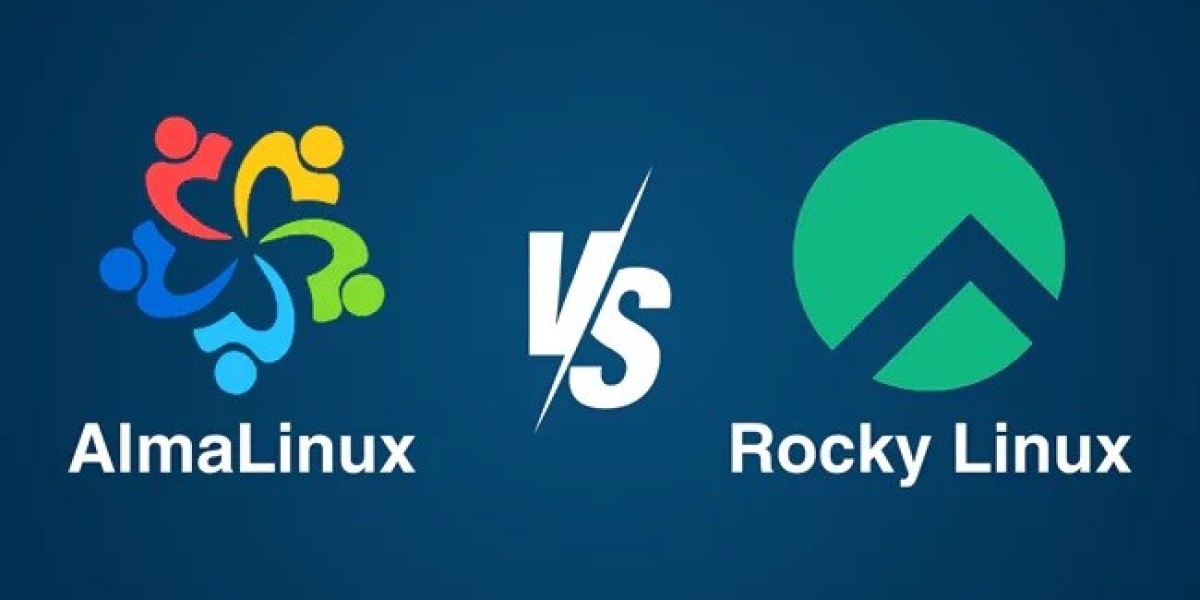After CentOS shifted to CentOS Stream, users began searching for stable alternatives. Two leading contenders emerged: AlmaLinux and Rocky Linux. Both offer RHEL-compatible systems, but they differ in their approach to community support and development. If you're comparing Rocky Linux vs AlmaLinux or deciding between AlmaLinux or Rocky Linux, this article will help you understand the key differences and guide you toward the best option for your needs.
Origins of AlmaLinux and Rocky Linux
Both AlmaLinux and Rocky Linux were created to fill the gap left by the transition of CentOS. AlmaLinux was developed by CloudLinux, a company with extensive experience in commercial Linux solutions. This gives AlmaLinux strong financial backing and technical expertise, which is particularly appealing to businesses.
Rocky Linux, on the other hand, was founded by Gregory Kurtzer, the original creator of CentOS. Rocky Linux follows the CentOS tradition of being community-driven, giving it a direct connection to the values and goals of open-source software. It was designed to serve users who wanted to stay true to CentOS’s original mission of being a free, open-source, and community-led distribution.
Community and Support: AlmaLinux vs Rocky Linux
One of the major considerations when choosing between AlmaLinux and Rocky Linux is the nature of community support and development.
Rocky Linux is fully community-driven, just like CentOS was. Its users have a hands-on role in the development and direction of the project. This decentralized model ensures that Rocky Linux remains committed to the open-source ethos, with updates, features, and development driven by the needs of its user base.
In contrast, AlmaLinux combines the best of both worlds: strong community participation and the financial and technical support of CloudLinux. While the AlmaLinux community plays a vital role, CloudLinux provides structured releases, security updates, and commercial backing. For enterprises that want stability and predictability, this combination can be an attractive advantage.
Release Cycle and Stability
Both AlmaLinux Rocky Linux follow RHEL’s release cycle, ensuring that their updates and support mirror Red Hat's schedule.
AlmaLinux, with its commercial backing, can offer quicker and more structured releases of security patches and updates. This can be a crucial factor for businesses that need timely updates to maintain security and stability in enterprise environments.
On the other hand, Rocky Linux maintains its community-driven model, and while the release process is efficient, it might vary depending on the level of community contributions. That said, the Rocky Linux community is highly active, ensuring that updates remain reliable and timely.
Performance and Usability
Both AlmaLinux and Rocky Linux offer nearly identical performance, as they are both RHEL clones designed to provide stable, secure environments. Users can expect similar functionality, system performance, and compatibility with enterprise software.
However, if you’re looking for a more open and collaborative environment, Rocky Linux might be your best option. Its purely community-driven model appeals to users who want an open-source project free from corporate influence.
AlmaLinux, on the other hand, provides the same open-source benefits with the added stability and assurance of commercial backing. For users and enterprises who value commercial support or need additional guarantees around stability, AlmaLinux offers the right balance between community involvement and corporate structure.
Migration and Long-Term Viability
Both AlmaLinux and Rocky Linux offer seamless migration paths for users coming from CentOS. They have designed tools and documentation that help make the transition smooth, ensuring that users can switch with minimal disruption.
In terms of long-term viability, Rocky Linux, with its community-driven focus, depends on the continued support and involvement of its user base. The project will continue to thrive as long as the community remains active and engaged.
AlmaLinux, backed by CloudLinux, provides more long-term security for enterprises. The financial and technical resources of CloudLinux ensure that AlmaLinux has the stability and funding to continue evolving, making it a safe bet for users who require a reliable system for years to come.
Conclusion:
When comparing AlmaLinux vs Rocky Linux, the best choice depends on your specific needs and preferences.If you prefer a community-driven, open-source project that follows in the footsteps of the original CentOS, Rocky Linux is an excellent choice. It appeals to users who value independence and the principles of open-source collaboration.
Naijamatta is a social networking site,
download Naijamatta from Google play store or visit www.naijamatta.com to register. You can post, comment, do voice and video call, join and open group, go live etc. Join Naijamatta family, the Green app.
Click To Download


